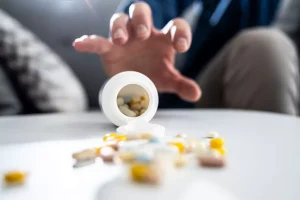
Dave Sheridan’s leadership of NARR reflects a deep commitment to advancing recovery housing standards and Fair Housing Rights. His background in investment management and roles within the Chandler Lodge Foundation and Southern California Sober Living Network complement his efforts to lead NARR towards fostering quality recovery environments nationwide. Dave’s national influence as a speaker and writer further underscores his commitment to recovery residences and their pivotal role in the recovery process. The National Association of Recovery Residences (NARR) broke new ground in 2011 by creating the first-ever national recovery residence standard. This groundbreaking standard clearly delineates the spectrum of housing support available for those in recovery from substance use disorders. The heart of all recovery residences is the Social Model, an operational framework that distinguishes these environments from other shared living spaces.
Recovery Residence Association Quality Standards
Her work aims to bridge mental health disparities, focusing on recovery capital and combating recovery-related discrimination. As a board member of NARR, Dr. Vilsaint’s contributions are instrumental in fostering a more equitable and supportive recovery community. Level I Type P (Peer-run) are democratically run alcohol and illicit substance-free recovery homes. Oxford Houses™ are the most widely known example and researched as indicated by their inclusion in SAMHSA’s National Registry of Evidence-based Programs and Practices (Substance Abuse and Mental Health Services Administration 2023).

Beth Fisher Sanders Board Member
Her leadership at The Woodrow Project, focusing on women’s recovery, emphasizes the power of community and hope. NARR’s work contributes to a broader understanding of the critical role of residential recovery environments in the recovery process, and actively enhances the quality and availability of recovery residences. The primary mission of MARR is to promote this ethical and sustainable management of high-quality recovery residences throughout the State of Maine.
Outpatient Treatment & Recovery Residences: How Do Clients Do Over Time When The Services Are Offered Together?
Senior residents, appointed by the owner/operator to serve as the head of household, are typically called the House Manager. To serve higher needs/lower recovery capital populations, such as transition aged youth (e.g., youth years of age) with opioid use disorders, some Level II’s provide recovery support services and life skills development but at a lower intensity than Level III’s. This policy statement by the Society for Community Research and Action highlights what we know about recovery residences, and, just as importantly, what we need to know. The establishment of standards by the National Alliance of Recovery Residences, and the related push by some policy makers to adapt these standards to support recovery residences in their states are both noteworthy. In addition, the panel’s recommendation to evaluate recovery residences in context of other recovery support services was particularly compelling. Indeed, the substance use disorder treatment and recovery fields would benefit substantially from greater knowledge about how individuals should optimally engage in a variety of services (e.g., recovery residences, outpatient treatment, mutual-help groups, medications).
Throughout the 1990s, many treatment programs discontinued their social model elements, a distinct departure from today’s residential community approach. An example of a Level IV is a recovery residence that implements social model care in a therapeutic community. All recovery residences offer alcohol and illicit substance-free living environments and utilize a social model recovery approach. They are differentiated by the intensity of staffing, governance, and recovery support services. NARR Levels are informed by the American Society of Addiction Medicine (ASAM) categorization of different types of treatment and recovery programs, and the terms Levels and Types can be used interchangeably. They are alcohol and illicit substance-free recovery housing that utilize house rules and peer accountability to maintain safe and healthy living environments.
- This policy statement by the Society for Community Research and Action highlights what we know about recovery residences, and, just as importantly, what we need to know.
- Dr. Ashley E. Stewart stands at the forefront of diversity, inclusion, and social work, focusing her research on identity, structural oppression, and recovery health equity.
- The consistency of core elements across certified residences can provide peace of mind to residents, families, neighbors, legislators, and funders, without additional oversight.
- His personal experience with recovery residence support adds a deeply personal touch to his professional endeavors, advocating for the reduction of stigma and the integration of recovery residences within communities.
- The establishment of standards by the National Alliance of Recovery Residences, and the related push by some policy makers to adapt these standards to support recovery residences in their states are both noteworthy.
Promoting High Quality Recovery Residences in San Diego County

NARR emphasizes ethical practices in the management and operation of recovery residences, advocating for integrity, fairness, and respect for all residents. With a wealth of experience in recovery circles and the support of the National Alliance for Recovery Residences, the Alabama Alliance for Recovery Residences is well equipped what is a recovery residence to promote a healthy recovery lifestyle in communities throughout our home state of Alabama. Recovery residences house individuals who seek a living environment focused on the whole-person approach to recovery and are actively receiving Outpatient Treatment or Recovery Services under BHS SUD contract or recovery services.
This model emphasizes the importance of personal and collective responsibility for the safety and progressive health of oneself and others in the community. Strengths-based lived experience, peer leadership, participative governance, and community-based support networks are the foundational elements for lasting recovery. George Braucht’s 14,000+ hours of supervised psychotherapy and community psychology experience significantly contributes to workforce development and social justice initiatives in behavioral health. In establishing these definitions, NARR pursued an inclusive approach, gathering input from leading regional and national recovery housing groups, as well as individual recovery residence providers with decades of specialized experience. The resulting standard reflects the shared wisdom and strengths of the entire recovery residence community.
Levels (Types) of Recovery Residences
- Recovery residences house individuals who seek a living environment focused on the whole-person approach to recovery and are actively receiving Outpatient Treatment or Recovery Services under BHS SUD contract or recovery services.
- They serve individuals that are currently receiving outpatient SUD services or are enrolled in recovery services.
- In this study, the panel members leveraged their expertise in recovery residence research and policy to develop a research agenda for the immediate future, while making relevant recommendations to policy makers, clinical program staff, and interested lay individuals.
- National Alliance for Recovery Residences (NARR) is a leading nonprofit organization dedicated to expanding the availability of well-operated, ethical, and supportive recovery housing across the United States.
- Our Board of Directors is composed of trailblazers in the recovery residence sector, bringing together a rich tapestry of expertise, compassion, and unwavering dedication.
Her work as an educator and consultant is pivotal in advancing policies that address health disparities and support recovery from substance use disorders. At Temple University’s School of Social Work, Dr. Stewart’s role further enables her to impact the next generation of social work professionals. NARR prioritizes educating providers, residents, and the broader community about the recovery process, the role of recovery residences, and the importance of standards to enhance support for recovery journeys. Dr. Corrie Vilsaint’s leadership and research focus on racial health equity within recovery processes are groundbreaking.




